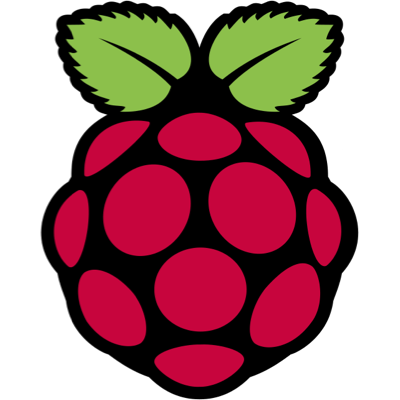
【小ネタ】Raspberry Pi と USB接続のWebカメラ でRTSPサーバを作って動画を配信する
この記事は公開されてから1年以上経過しています。情報が古い可能性がありますので、ご注意ください。
1 はじめに
こんにちは、AIソリューション部の平内(SIN)です。
Amazon Kinesis Video Streamsを色々試している中で、手軽に利用できるRTSPサーバが欲しいと言うことで、Raspberry Pi で作った記録です。
使用させて頂いたのは、v412rtspserverです。
https://github.com/mpromonet/v4l2rtspserver

作成したRTSPサーバで配信しているようすです。
2 要件
今回、利用した諸元等は以下のとおりです。
(1) 3 Model B+
$ cat /proc/cpuinfo | grep Revision Revision : a020d3

(2) Raspbianイメージ
昨年11月の最新版(Raspbian GNU/Linux 9 (stretch)) 2018-11-13-raspbian-stretch.img を使用しました。
Linux OSのディストリとバージョン
$ lsb_release -a No LSB modules are available. Distributor ID: Raspbian Description: Raspbian GNU/Linux 9.4 (stretch) Release: 9.4 Codename: stretch
カーネル
$ uname -a Linux raspberrypi 4.14.79-v7+ #1159 SMP Sun Nov 4 17:50:20 GMT 2018 armv7l GNU/Linux
(3) Webカメラ
BUFFALOの320万画素Webカメラ( BSW32KM01HBK)です。

http://buffalo.jp/product/multimedia/web-camera/bsw32km01h/
3 コンパイル等
作業は以下のとおりです。
(1) カメラの認識
カメラが /dev/video0 で認識できていることの確認
$ v4l2-ctl --list-devices USB Camera: USB Camera (usb-3f980000.usb-1.1.3): /dev/video0
/etc/modulesにbcm2835-v4l2を追加して再起動する
# /etc/modules: kernel modules to load at boot time. # # This file contains the names of kernel modules that should be loaded # at boot time, one per line. Lines beginning with "#" are ignored. i2c-dev bcm2835-v4l2
(2) 必要モジュールのインストール
$ sudo apt-get install cmake $ sudo apt-get install subversion $ sudo apt-get install liblivemedia-dev
(3) コンパイル及び、インストール
$ git clone https://github.com/mpromonet/h264_v4l2_rtspserver.git $ cd h264_v4l2_rtspserver $ sudo cmake . $ sudo make install
コンパイル及び、インストールが完了すると、/usr/local/bin/v4l2rtspserverが利用可能になります。
Install the project... -- Install configuration: "" -- Installing: /lib/systemd/system/v4l2rtspserver.service -- Installing: /usr/local/bin/v4l2rtspserver -- Installing: /usr/local/share/v4l2rtspserver/index.html -- Installing: /usr/local/share/v4l2rtspserver/hls.js/dist/hls.light.min.js
4 配信
v4l2rtspserverを実行するだけで、デフォルト値でRTSPサーバとして動作します。(採用されたデフォルト値は、コンソールに表示されます。)
$ sudo v4l2rtspserver Create V4L2 Source.../dev/video0 driver:uvcvideo capabilities:84200001 mandatory:4000001 /dev/video0 support capture /dev/video0 support streaming /dev/video0:YUYV size:640x480 Cannot set pixelformat to:H264 format is:YUYV /dev/video0:MJPG size:640x480 bufferSize:614400 fps:1/30 nbBuffer:0 Device /dev/video0 nb buffer:10 Create Source .../dev/video0 begin thread
デフォルトで起動した場合、rtsp://<RaspberryPiのアドレス>:8554/unicastでアクセス出来ます。(デフォルトでポート8554、パスは/unicastとなっています)

パラメータでデフォルト値以外の指定も可能です。
./v4l2rtspserver [-v[v]] [-Q queueSize] [-O file] \ [-I interface] [-P RTSP port] [-p RTSP/HTTP port] [-m multicast url] [-u unicast url] [-M multicast addr] [-c] [-t timeout] \ [-r] [-s] [-W width] [-H height] [-F fps] [device1] [device2] -v : verbose -vv : very verbose -Q length: Number of frame queue (default 10) -O output: Copy captured frame to a file or a V4L2 device RTSP options : -I addr : RTSP interface (default autodetect) -P port : RTSP port (defa-ult 8554) -p port : RTSP over HTTP port (default 0) -U user:password : RTSP user and password -R realm : use md5 password 'md5(::') -u url : unicast url (default unicast) -m url : multicast url (default multicast) -M addr : multicast group:port (default is random_address:20000) -c : don't repeat config (default repeat config before IDR frame) -t secs : RTCP expiration timeout (default 65) -S[secs] : HTTP segment duration (enable HLS & MPEG-DASH) V4L2 options : -r : V4L2 capture using read interface (default use memory mapped buffers) -w : V4L2 capture using write interface (default use memory mapped buffers) -s : V4L2 capture using live555 mainloop (default use a separated reading thread) -f : V4L2 capture using current capture format (-W,-H are ignored) -fformat : V4L2 capture using format (-W,-H are used) -W width : V4L2 capture width (default 640) -H height: V4L2 capture height (default 480) -F fps : V4L2 capture framerate (default 25, 0 disable setting framerate) -G x[x] : V4L2 capture format (default 0x0x25) ALSA options : -A freq : ALSA capture frequency and channel (default 44100) -C channels: ALSA capture channels (default 2) -a fmt : ALSA capture audio format (default S16_LE) device : V4L2 capture device and/or ALSA device (default /dev/video0)
5 自動起動
Raspberry Pi を起動しただけで、自動的に配信が開始するように、/etc/rc.local に /usr/local/bin/v4l2rtspserver を書いておきます。
#!/bin/sh -e # # rc.local # # This script is executed at the end of each multiuser runlevel. # Make sure that the script will "exit 0" on success or any other # value on error. # # In order to enable or disable this script just change the execution # bits. # # By default this script does nothing. # Print the IP address _IP=$(hostname -I) || true if [ "$_IP" ]; then printf "My IP address is %s\n" "$_IP" fi /usr/local/bin/v4l2rtspserver -W 1280 -H 960 -F 7 exit 0
6 最後に
v412rtspserverで、超簡単にRTSPサーバが作れます。これで、Kinesis Video Streamの動作確認も捗るはずです。









